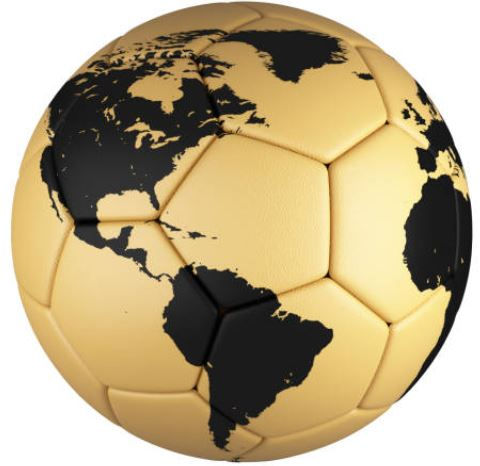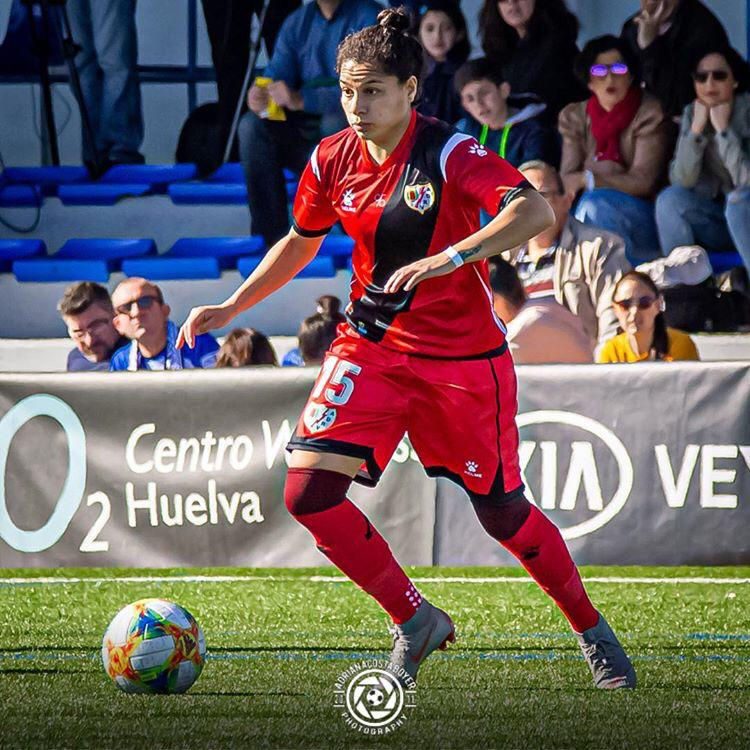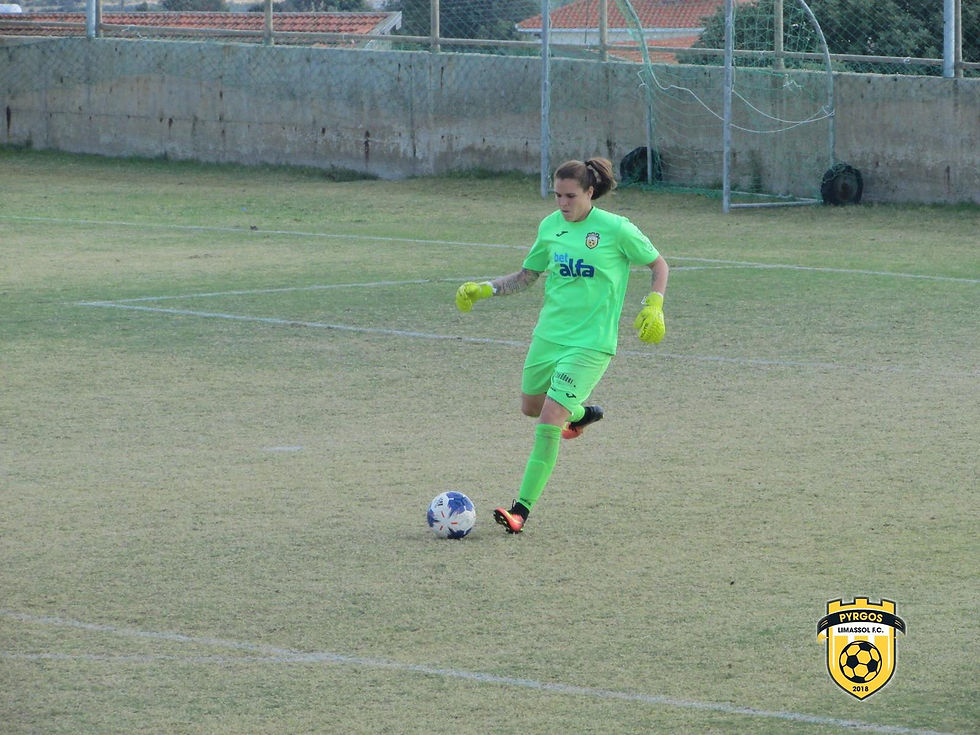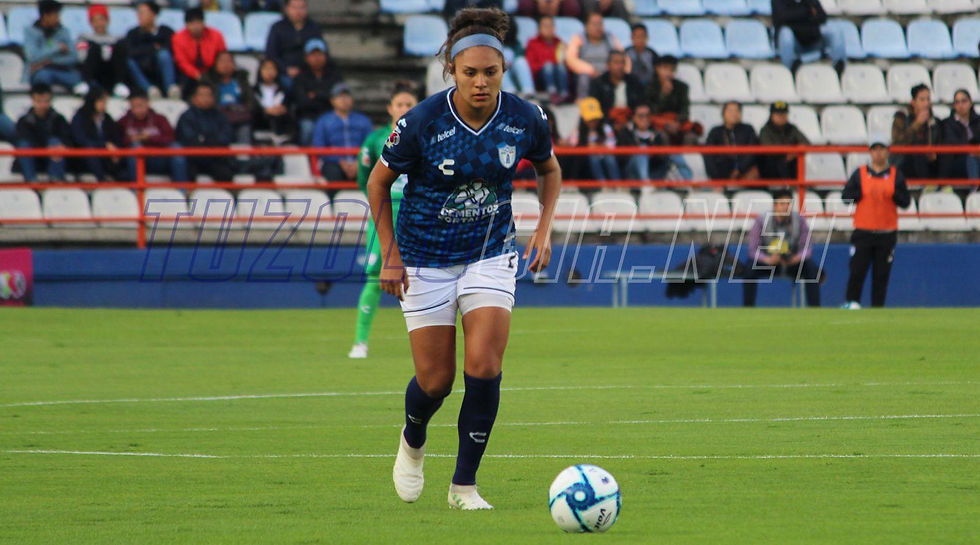How is Women's Football on the other side of the world? (part II)
- Katherine Sheppard

- 20 abr 2020
- 10 Min. de lectura

A week ago I published the first part of this series of articles where I talk about what women's football is like in other countries through the testimony of players who experience it first hand.
This week we talk about players competing in the elite leagues of Spain, Cyprus, Mexico and Colombia and also go into more depth discussing the problems and possible solutions for each league.

Oriana Altuve
She plays at Rayo Vallecano, belonging to Primera Iberdrola, Spanish 1st division.
It's her second season playing for the Madrid based team.
Previous teams: Gulima, UCV, Caracas FC (Venezuela), Colón (Uruguay), Santa Fe (Colombia).
In her opinion, the competitive level is very high "since every weekend is a battle" on the pitch.
What she likes most about Primera Iberdrola is "the level of demand".
She believes one thing that could improve in the league is to "feel more support." Currently there is some disparity between the clubs in the league as far as the economic resources they have.
Playing in the Spanish elite has made her improve as a player "in the tactical and defensive aspects." Rayo Vallecano, a mid-table team with great work ethic in every game, has taught her to sacrifice herself for the group and help in defensive tasks in the same way that she performs her offensive tasks as a forward. Personally, she considers herself a "more open-minded" person.
The Spanish league is characterized by combining technique with intensity. When comparing it with the Colombian league, for example, Ori says that "there's a lot of possession play and there's also a lot of support from the fans, while in the Spanish league there is a little more demand" and standards are held a little higher.
During games she feels supported but there are few fans, although very loyal. For her, there are still few people who come to encourage them and that the team should be promoted a little more.
To improve the league, she believes that "more games should be played in the men's team stadiums, to have more support, and to have more games televised" to have a greater reach.
Her routine consists of going to the gym in the morning, spending time with her teammates, training at night and resting.
Currently she combines her career as a footballer with a coaching course.
Oriana has been an important part of the Venezuelan national team in all its categories since 2008.

Andrea Tovar
She plays at Pyrgos Limassol F.C., Cyprus' 1st Division.
This was her first season on the team and in the Cypriot league.
Previous teams: UCAB Spirit, Caracas F.C., Deportivo La Guaira (Venezuela), São José E.C. (Brazil), Alianza Petrolera (Colombia), Deportivo Alavés (Spain).
It seems to her that the competitive level of the league is a little low. "There's a very marked difference in level between the teams" since the top two are considerably more powerful than the others. The league was in the final phase before COVID-19 stopped it - Apollon Limassol was already the mathematical champion followed by Andrea's team in second place.
According to Andrea, the league's predominant style of play tends to be more defensive and direct, but both her team and Apollon Limassol demonstrate their higher level through a more offensive game of possession and verticality.
What she likes the most about playing in Cyprus is the new challenge, "spending time with players from other cultures and learning a different style of play."
When asked what could improve in the league, she focuses on the competitive level. "It could be achieved if the teams make a greater effort to make it more professional, not only economically but also in terms of mentality and treatment of players."
This league has helped Andrea learn and improve as a player and as a person. "As a player I have learned that professionalism isn't only about getting paid, that we have to think first as professionals in order to grow, and that we have to work individually first in order to give the maximum to the team. As a person it has helped me meet and interact with people from very different cultures and to learn from them."
When comparing the Cypriot 1st division to other leagues where she has played, she comments that she could only compare it with the league in Venezuela because they share the gap of level teams have with each other. However, "it is very different in other respects. Here, there's still lack of support that it needs to grow further and move closer to the competitive levels of other countries."
The atmosphere during the matches is good, but she emphasizes the lack of support from the media and sponsors. "The people in the stands are usually family and friends, we don't have much support from other people."
Some ideas that she believes can contribute to the development of women's football in Cyprus mainly include the support of sponsors and large companies. "I think it's necessary for teams to invest in players, which would improve the league level, and also attract more attention and marketing."
Her routine consists of training at home or in the gym. In her spare time she learns and reinforces other languages, listens to music, watches movies or series, and rests.
Andrea has been a Vinotinto player in the U20 and senior categories and played several Copa Libertadores at club level.

Blair Lane
She plays at Club Pachuca belonging to Liga MX Femenil, the top tier of Mexican women's football.
She has been part of the team for almost a year.
Before making the leap to professional football, Blair received a full scholarship to play at Prairie View A&M University, in the United States' premier college sports division.
She feels that the level is good, but could improve. As for the style of play, they emphasize possession but at the same time the players tend to keep the ball more and be more individualistic, especially in the last third of the field. "Instead of being a 1-2-touch game, 3-4 touches are made before passing the ball," slowing down the pace, "and most scoring chances are generated by individual actions and crosses to the area." She contrasts this with football in the United States, where in addition to being faster, more physical and direct, it has a more intense rhythm and "there are more scoring chances generated by shots from outside the area."
What she likes the most are the fans. "There are some teams that have a pretty good fan base." Evidence of this can be seen especially during América, Tigres and Monterrey games. In some occasions attendance numbers have reached up to 17,000 spectators.
She believes that improving the league should start with getting more sponsors and promoting women's football in general.
Being away from home has made her grow and mature as a person and being in Mexico has given her the opportunity to learn Spanish. On the other hand, getting used to playing a different style of football has helped her develop as a player.
Among her ideas to improve professional football in Mexico, she mentions that it needs more investment. "For example, the wages are terrible, I made more money during weekend playing in an informal league in Houston (Texas) than I earn in a month as a professional footballer." Part of Blair's 'salary' is covering her university studies.
Her routine consists of early training with the team, recovery sessions, gym and rest.
In addition to playing football, Blair studies Psychology and works as a coach whenever she can. She aspires to study a second career in Business and to play professionally in the United States.
Blair is American with Mexican origins. Her goal is to play for the Houston Dash, a professional women's team in Texas.

Lisol Castillo
She plays for Club Atlético Bucaramanga, of Colombia's Liga Águila Femenina.
She has spent the last 2 seasons playing in the league.
Previous teams: Deportivo Anzoátegui and Estudiantes de Guárico (Venezuela).
She describes the level of the Colombian league as good. It gets higher with time because players "do three times as much the effort to do better and be on the starting lineup."
Matches are slower paced. "More fouls are called and more time is lost, teams also play to the opponent's mistake." At the same time, it is "very collective," where possession predominates since it has very skilled players, with explosion and agility.
What she likes most about the league is the support of the people in the stands and (in between laughs) that if you score a hat-trick you get to keep the ball.
For the league to improve "it must be a longer competition and for the Dimayor (entity that governs Colombian professional football in general) to support the women's league more." The competition only lasts half a year, which forces footballers to stop or find another team to play in order to stay active for a full year.
Playing in the Colombian women's football elite has made her better as a player. "Now I have more confidence in what I do, I am more disciplined, more grateful and above all more sociable." Personally, being away from her family has made her "more aware of knowing that there is time for everything and being more human."
When compared to the Venezuelan league, professionalism and treatment are two factors she emphasizes. In Colombia they travel 1-2 days before the game and "the treatment of the club makes you feel like at home", unlike in Venezuela where many teams travel on gameday "arriving 1 hour before games or even right on time" and clubs, even if they were renowned, "do not have the resources to provide the treatment you deserve as a player."
About the atmosphere during games, "it's something that motivates you and makes you give your best, it's nice to feel the support that comes from the stands." An example of this is the end of the 2019 season where 28,263 people witnessed América de Cali be crowned champion. In 2017, the attendance record was set (33,327) during the final that ended up declaring Santa Fe the first champion in the women's professional league history.
Lisol gives us 2 ideas to develop professional women's football in Colombia. Firstly, having a 1st and 2nd division with promotion and relegation, which would improve the competitive level even more. Secondly, the "union between players" and more uniformity in terms of league format and compliance.
Her routine consists of keeping in touch with her family, spending time with her teammates and training. She is dedicated to football 100%.
Lisol has been part of the Venezuelan national team, participating in competitions such as the 2018 Copa América.
Observations
We can start off with the gap in competitive level between teams in the same league, as in Cyprus. How do we attract people to women's football if it's not attractive? Each team, league and federation must work to achieve a certain level of uniformity where high quality matches are seen every weekend. As a consequence, the league level will rise and it will be easier to attract fans, sponsors, etc.
How do we achieve this? I think one of the main ways is by promoting grassroots football: more girls playing from a young age and staying involved as they grow up equals more women playing and nurturing teams with talent. Despite being a small country (approximately one million inhabitants), Cyprus has the potential to involve more girls in the sport. According to UEFA, there were almost 1,200 registered players in 2012 (280 of them youth players), while in 2017 the number dropped to 1,000 registered players but increased to 766 youth players. In addition to this, making football accessible to girls across the country is key: Most clubs and academies are located in Nicosia and Limassol, the country's main cities with a population of approximately 350,000 inhabitants.
Secondly, why are there teams that manage to attract thousands of fans to their home games while others in the same league fail? Liga MX Femenil is a good example of this. Blair played most of her games with at least a thousand people in the stands every match since her team is one of the most recognized in the league. However, attendance data from the Apertura 2019 season indicates that, on the same day, teams such as Veracruz could be seen with only 100 spectators and Tigres, on the other hand, with 12,000 fans in their stadium.
The difference from one team to another, game after game, is quite significant, but the reason may not be so obvious. Despite being the 3 clubs with the worst attendance numbers during the Apertura 2019 and being in the middle-low part of the table (Veracruz, Querétaro and Puebla) they accumulate an average of 13,700 followers on Twitter, which indicates they have a digital audience. However, the content is limited to photos and sometimes GIFS or memes, and the engagement level is low.
When comparing it with teams like Tigres (almost 107,000 followers) and Monterrey (63,300 followers) you can see that - in addition to the number of followers - there's considerably more engagement and great audiovisual content. This indicates that there are clubs that take more advantage of their social networks and turn followers into fans through more attractive content, bringing people closer to the team.
Finally, the duration of leagues such as the Liga Águila Femenina. Is it better to have a professional league that lasts half a year or a less professional league that lasts a full year? It's a question that many ask when they are presented with the case of the Colombian league. There will even be players who prefer the former and share their time with teams in other leagues of equal or better quality. But the answer should be none of the above.
Having a proper women's professional league in Colombia is totally possible. I think the root of the problem lies in the attitude that the team and federation managers have towards women's football. The duration of the league is not the only problem, to which is added the uncertainty and the employment gap, as described in a report by the Colombian Association of Professional Soccer Players (ACOLFUTPRO).
Women's football in Colombia has many positives, but the most important aspects are negative. The lack of organization and respect towards players also shows a lack of interest from people in charge. It's as if they see it as an chore instead of seeing it for what it really is: an essential step forward for women's sport and for society. The league and the teams need to give resources, structure, formality and respect to their women counterparts, and they are perfectly capable of doing so.
As for the Liga Iberdrola, there are several aspects that could be improved to go from being a very good league to an excellent league. Spanish professional women's football has developed a lot in recent years - it has a league with great players and a fairly stable structure. However, there are more disputes than there should between clubs, federation and player unions regarding television rights, training rights and contracts. Of course it will be worth dedicating an article exclusively to the analysis of these things.
The progress of women's football, regardless of the country, depends on the collective and simultaneous effort of associations, federations, clubs, managers and players who genuinely believe in the potential it has.
Comment below and let me know what you think. Subscribe to my blog to be notified of future articles.



Comentarios